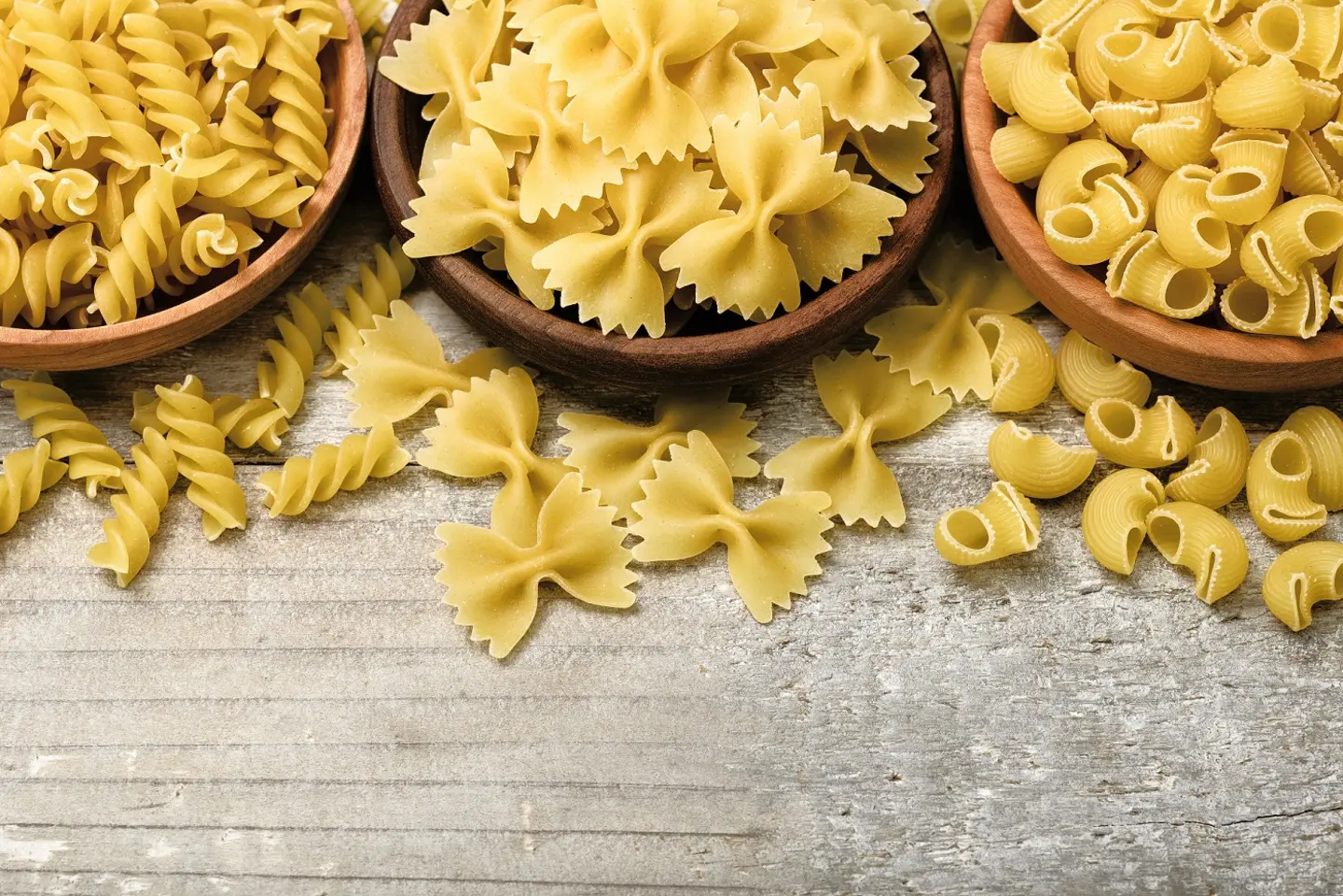
Thinking Outside the Pasta Box
Professor Mark Davis talks pandemic supply and demand with Jean- Pierre Comte, P ’21, president of Barilla Americas
If you’ve been searching grocery store shelves in vain for specialty pasta like cellentani or orecchiette, Jean-Pierre Comte, P ’21, wants you to know there’s a reason for that.
Comte is president of Barilla Americas, the North American arm of the global foods company best known for its distinctive blue boxes of authentic Italian pasta. He recently joined Professor of Operations and Supply Chain Management Mark Davis for a live-streamed discussion about supply-chain challenges posed by the COVID-19 pandemic. The event, part of an ongoing series sponsored by the university’s Office of Alumni and Family Engagement, drew participants from around the world.
Miss our ‘Managing Food Supply and Demand in a Global Pandemic’ Webinar?
supply and demand strategies with Jean-Pierre
Comte, P ’21, president of Barilla Americas.
Davis opened the discussion by recalling the early days of quarantine, when Americans rushed out to stock up on pantry essentials. Dry pasta — inexpensive, long-lasting and versatile — proved particularly popular, leaving many manufacturers scrambling to meet consumer needs. Barilla Americas, however, demonstrated what Davis defines as creating “surge capacity.” That is, the ability to quickly adapt supply chains and production facilities to meet a sudden and unexpected increase in demand.
Comte said the company relied on several key strategies, which can also apply to other industries. Among them:
- Plan for Contingencies. Barilla executives participate in crisis management training every six months, Comte said, and while such scenarios didn’t include a global pandemic, these regular exercises — coupled with an awareness of how COVID-19 was affecting Italy, home to Barilla’s global headquarters — helped the company respond more quickly and effectively to the current crisis. As he noted, “We had already implemented masks and gloves in our plants while the Centers for Disease Control was still contemplating its guidelines.”
“Preplanning is key,” confirmed Davis, noting that businesses need foresight and flexibility to weather a crisis. “The biggest problems companies face can be attributed to not having contingency plans in place.”
- Reduce Complexity. Under normal circumstances, Barilla Americas makes 75 different pasta shapes, from long, thin strands of angel hair to hollow tubes of ziti, and both traditional semolina and legume-based varieties. To maximize efficiency “we had to cut down on our assortment,” said Comte, noting that each shape requires a time-consuming change in production line machinery. For now, the company is focusing on the top 25 sellers, or “stars,” which includes penne, spaghetti, elbows and other shapes popular with American consumers. This may make corkscrew-like cellentani and ear-shaped orecchiette a bit harder to come by for a while.
- Streamline Supply Chains. Barilla Americas has two North American plants, one in Ames, Iowa, and the other in Avon, New York, Comte explained. They buy durum wheat for their pasta directly from growers in North Dakota and Canada and ship the grain by rail to their Ames plant, where it’s milled into flour. Two-thirds of this flour is turned into pasta in Iowa; the rest goes on to New York. Together, the two plants produce roughly 300,000 tons of dry pasta each year.
By purchasing directly from local grain producers and eliminating intermediate suppliers, Davis said, Barilla Americas has “the advantage of a shorter, upstream supply chain.” Companies with compact, centralized supply chains, Comte added, are typically more resilient than those who rely on complex networks of international suppliers: “The closer you are to your consumer, the better.”
Prof. Dave Gulley: ‘Crowded Restaurants Will Become an Oxymoron’
Right now it can be difficult to envision life in a post-pandemic world. But it’s clear the crisis is already forcing the global business community to make sweeping organizational changes. Comte suggested that companies like his may look to increase the use of robotics in some areas of manufacturing and incorporate blockchain technology, whereby consumers could trace a product through every step of the supply chain. As he put it, “We’ll need to relearn what the consumer will expect in a post-COVID environment.”
Davis and Comte agreed that the food service world will need to reinvent itself. With people reluctant to return to restaurants and widespread unemployment limiting consumer spending, Comte said, “The trend of eating at home is here to stay.” With quarantined families gathering around the dinner table to connect and converse, he noted the pandemic has had one positive outcome: “Americans are rediscovering the value of eating — and being — together.”

